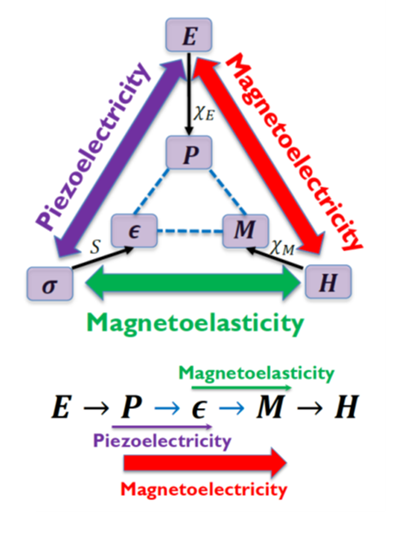CHIRON workshop

|
The CHIRON workshop on "Hybrid Spin-Wave Computing" took place on the 27th of April 2022 in Heraklion, Crete, in a hybrid (digital and physical presence) format. The aim of the workshop was to discuss recent and future concepts for spin-wave computing and the experimental and theoretical methods needed to explore them. Topics included energy efficient spin-wave excitation using the magneto-elastic interaction, large scale spin-wave circuits, nonlinear spin-wave phenomena and the use of novel material systems for magnonics. Abstract and presentations of the workshop can be found below |
|
Workshop Agenda (Eastern European Time = CET + 1 hour) |
|
| 9:30-10:05 |
Aurore Finco (Université de Montpellier and CNRS): |
| 10:05-10:40 |
Vincent Vlaminck (IMT Atlantique, Brest): |
| 10:40-11:00 |
Adelina Nicolaie (European Innovation Council and SMEs Executive Agency): |
| 11:00-11:20 |
Coffee Break |
| 11:20-12:05 |
Jack C. Gartside and Kilian D. Stenning (Blackett Laboratory, Imperial College London): |
| 12:05-12:35 |
Titiksha Srivastava (SPEC and Unité Mixte de Physique, CNRS, Thales, Paris): |
| 12:35-14:00 |
Lunch Break |
| 14:00-14:35 |
Qi Wang (University of Vienna): |
| 14:35-15:10 |
Gyorgy Csaba (Pazmany Peter Catholic University, Budapest): |
| 15:10-15:30 |
Gouéré Diane (Unité Mixte de Physique CNRS, Thales): |
| 15:30-16:00 |
Coffee Break |
| 16:00-16:20 |
Abdulquader Mahmoud (TU Delft): |
| 16:20-16:40 |
Asma Mouhoub (Université Paris-Saclay, CNRS, Palaiseau): |
| 16:40-17:00 |
Frederic Vanderveken (imec, Leuven): |
| 17:00-17:20 |
Alexandra Nicoloiu (IMT, Bucharest): |
| 17:20-17:50 |
Christoph Adelmann (imec, Leuven): |
| 17:50-18:00 |
Philipp Pirro (TU Kaiserslautern): |
For more information please contact This email address is being protected from spambots. You need JavaScript enabled to view it..
Preprints
|
8. |
Title: Would Magnonic Circuits Outperform CMOS Counterparts? |
|
7. |
Title: Theoretical description of power transfer in a magneto-acoustic resonator |
|
6. |
Title: A GHz operating ScAlN based SAW resonator used for Surface Acoustic Waves/Spin Waves Coupling |
|
5. |
Title: Measuring a population of spin waves from the electrical noise of an inductively coupled antenna |
|
4. |
Title: Parametric excitation and instabilities of spin waves driven by surface acoustic waves |
|
3. |
Title: Spin wave based approximate 4:2 compressor |
|
2. |
Title: Spin wave based 4:2 compressor |
|
1. |
Title: Fully resonant magnetoelastic spin wave excitation by surface acoustic waves under conservation of energy and linear momentum |
Spin waves
|
A group of disruptive spintronic devices concepts have been based on spin waves as information carriers. Spin waves are oscillatory collective excitations of the magnetic moments in ferromagnetic or antiferromagnetic media. Of crucial importance in spin-waves devices and circuits are the waveguide structures. In waveguides with dimensions comparable or smaller than the wavelength, the dispersion relation of spin waves is strongly affected by waveguide boundaries and lateral confinement effects. In general, the dispersion relation of long-wavelength dipolar spin waves depends on the direction of the wavevector and the static magnetization. There are three limiting cases of dipolar spin waves, often called surface spin waves (SSW), forward volume waves (FVSW) and backward volume waves (BVSW) (details: Mahmoud et al., J. Appl. Phys. 128, 161101 (2020)) |
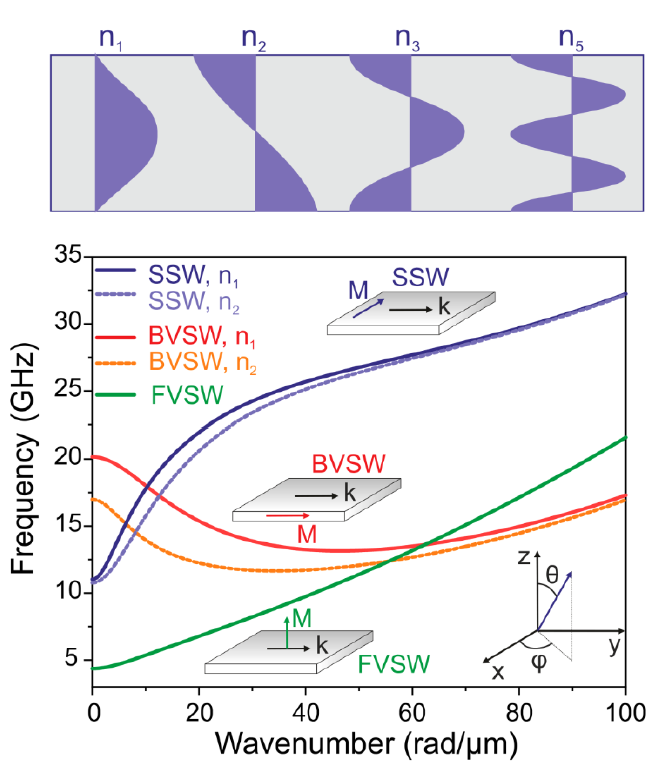 |
 |
| When logic levels are encoded in spin-wave amplitude or phase, performing a logic operation requires the combination of different input waves and the generation of an output wave with an amplitude or phase corresponding to the desired logic output state. |
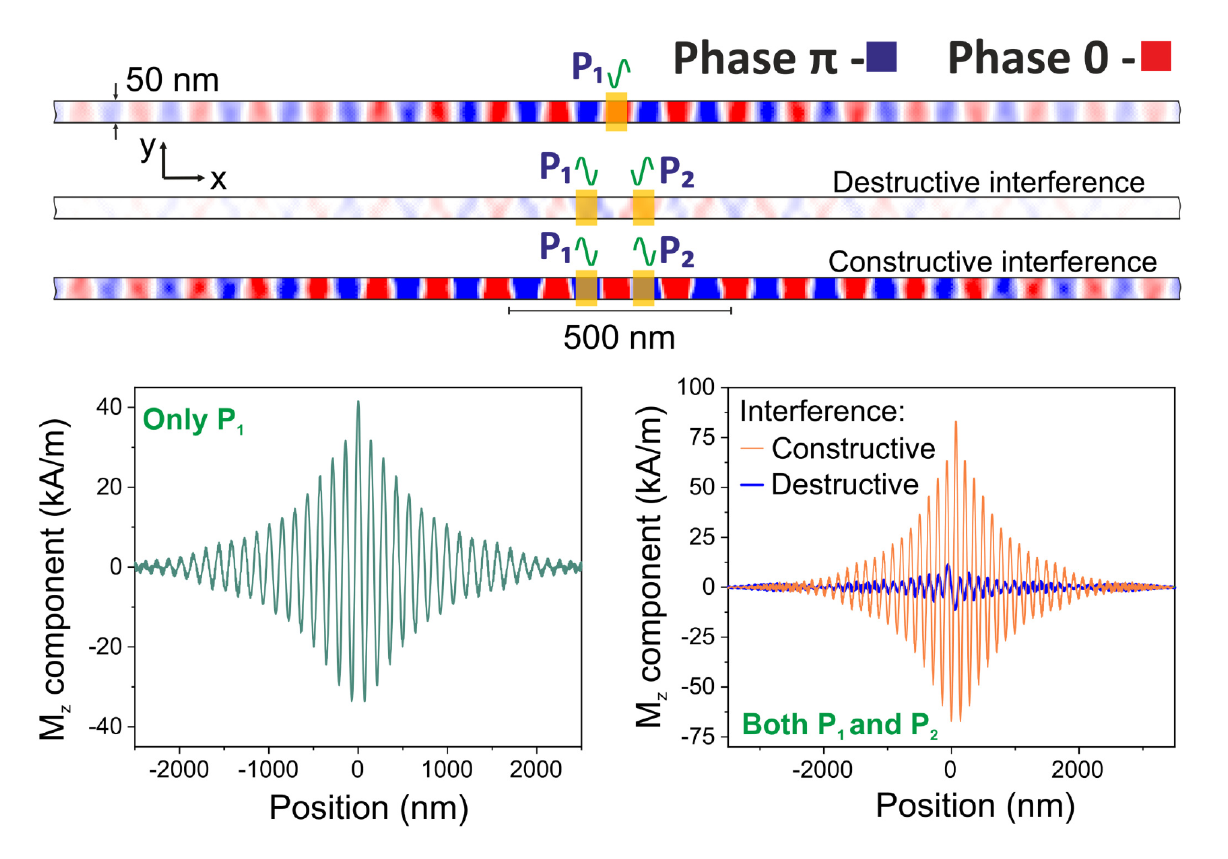 |
In absence of nonlinear effect, the interaction of coherent waves is described by interference, i.e. the addition of their respective amplitudes at each point in space and time. For in-phase waves with equal frequency, constructive interference leads to a peak-to-peak amplitude of the generated wave that is equal to the sum of the peak-to-peak amplitudes of the input waves. By contrast, destructive interference leads to a subtraction of the peak-to-peak amplitudes of input waves when their phase difference is π. |
|
| Top |
Magnetoelectricity
| Magnetoelectric transducers |
| To build logic circuits based on spin-wave majority gates that are competitive with CMOS-based technology, it is necessary to develop energy efficient transducers between spin-wave and electric domains so to cointegrate the two technologies in a single system. Key requirements of such transducers are high coupling efficiency, low operational power, and high bandwidth. Magnetoelectric transducers represent a scalable and low-power alternative consisting of a piezoelectric-magnetostrictive (PE-MS) bilayer in which the coupling between the electric and the spin domain occurs via strain. (details: Tierno et al. Microelectronic Engineering 187–188 (2018)). |
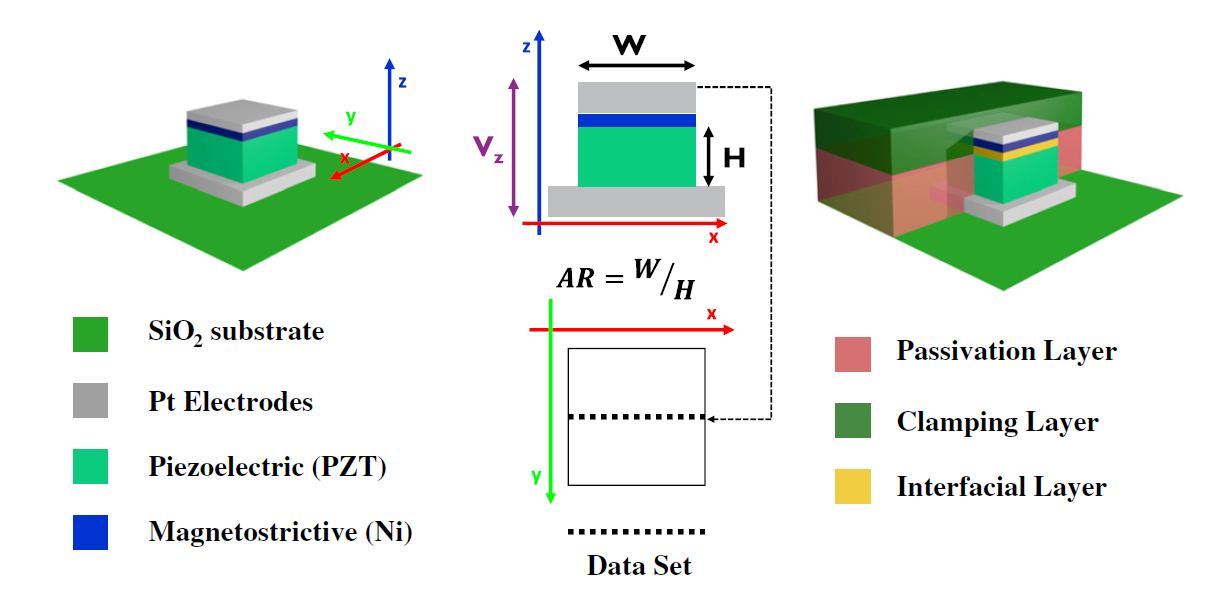 |
|
|
Of particular interest was the geometry of the transducer and the impact of the non-active surrounding layers on the effective magnetoelastic and magnetoelectric coupling. The “active” part of the structure consisted of a pillar including the magnetoelectric bilayer and two metal electrodes. In the same way, the experimental device structure is based on a magnetoelectric pillar transducer. Functional ME spin wave transducers down to 500 nm CD and up to 10 GHz has already been demonstrated. |
|
 |
| Top |
Majority gate
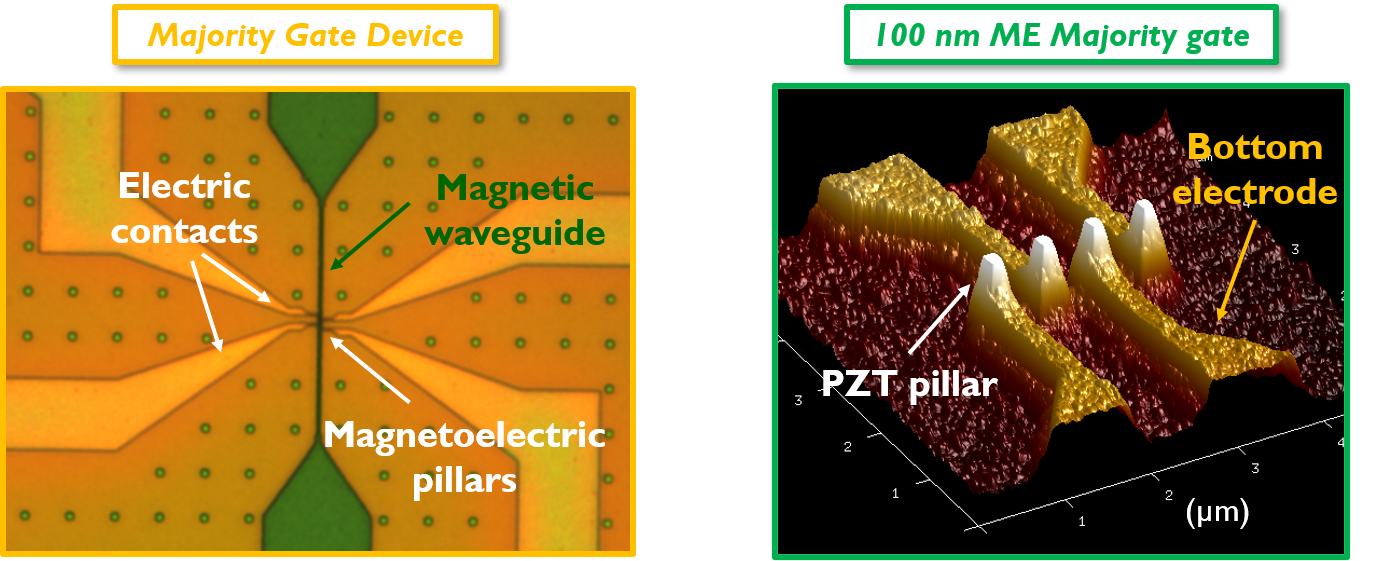 |
||
| Spin waves are particularly suited for the realization of compact interference-based majority gates, called Spin-Wave Majority Gate (SWMG). The basic structure is the inline SWMG, in which binary logic signals are encoded in the phases of the individual spin waves using phases of 0 and π as logic 0 and 1, respectively. Constructive or destructive interference leads then to an output wave with a phase that corresponds to the majority of the individual spin-wave phases. The amplitude of the output wave contains further information whether weak or strong majority is obtained. |  |
|
| SWMG with electrical transducers |
 |
Our implementation will be based on Co40Fe40B20 and permalloy waveguides with widths down to 850 nm. Micromagnetic simulations for 850-nm-wide Co40Fe40B20 waveguides in the Damon-Eshbach geometry show the excitation of spin waves confined in the center of the waveguide. |
|
|
|
|
Animations of the experimental magnetization dynamics in a SWMG with a 2.0 μm wide permalloy waveguide, imaged by time-resolved scanning transmission x-ray microscopy for different combinations of input phases: (π; π; π); (0; 0; π); (0; π; 0). The input phase combinations are indicated in the animations (details: Talmelli et al, Sci. Adv. 6(51), eabb4042 (2020)).
|
|
|
|
|
|
|
Animations of the magnetization dynamics in a SWMG with an 850 nm wide Co40Fe40B20 waveguide calculated by micromagnetic simulations for different combinations of input phases: (0; 0; 0); (π; 0; π). The input phase combinations are indicated in the animations. The complementary combinations (π; π; π) and (0; π; 0) can be obtained by shifting the time by half of a period.
|
||
| Top | |

